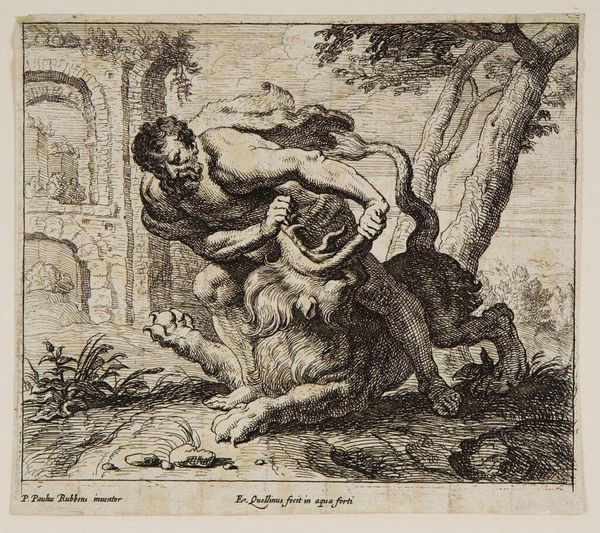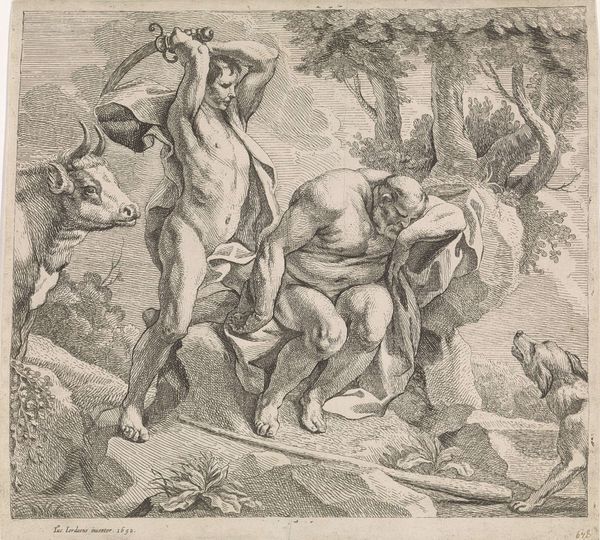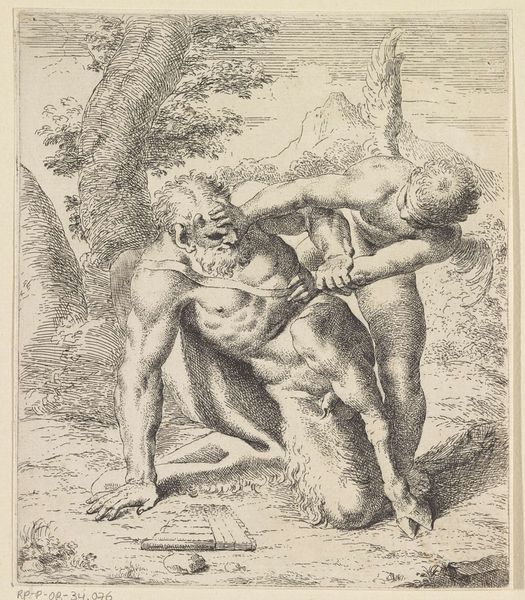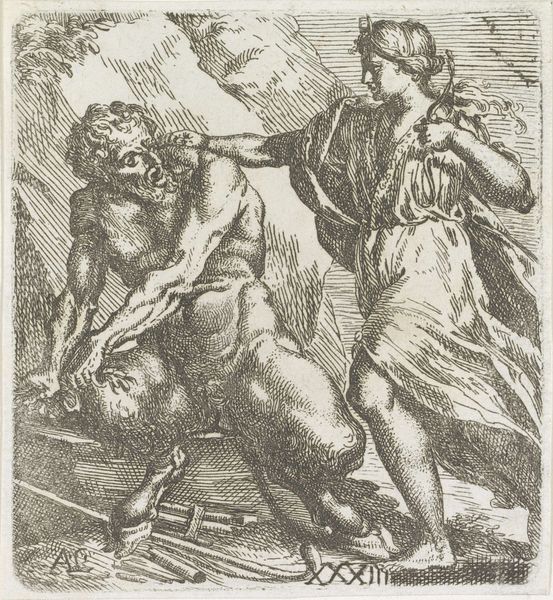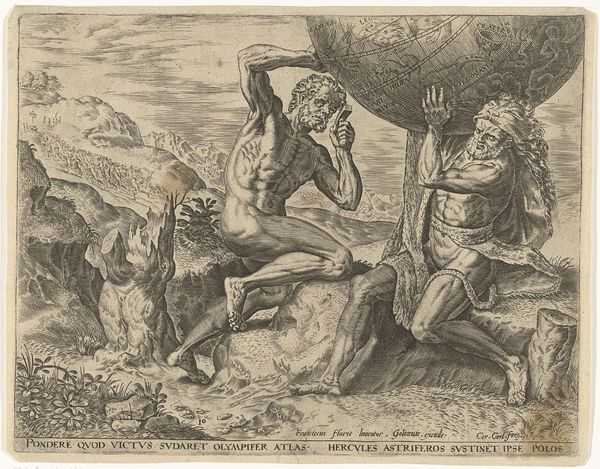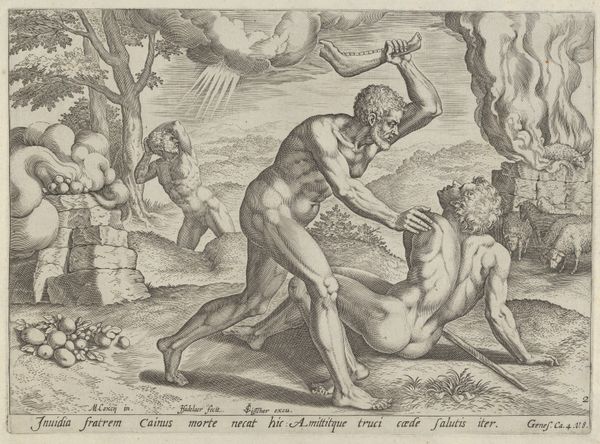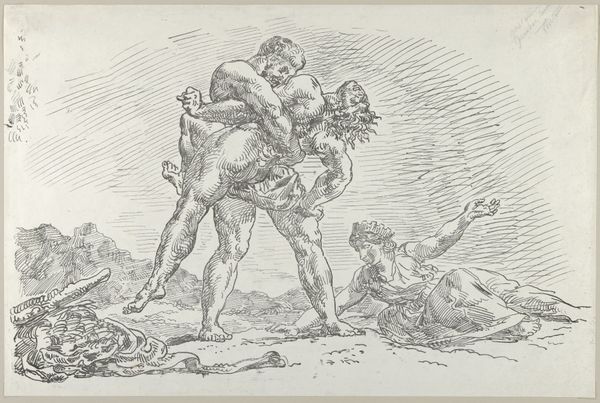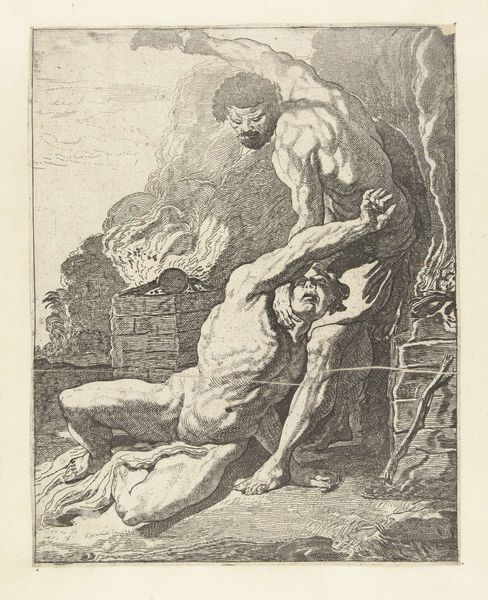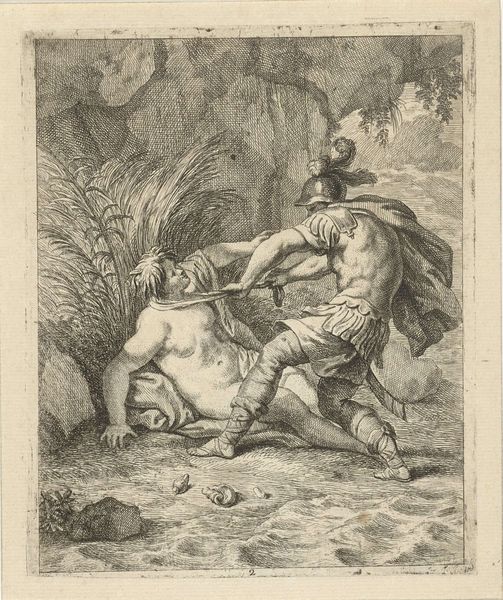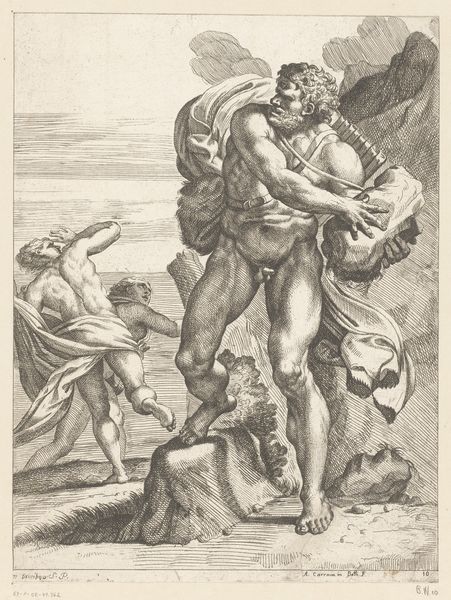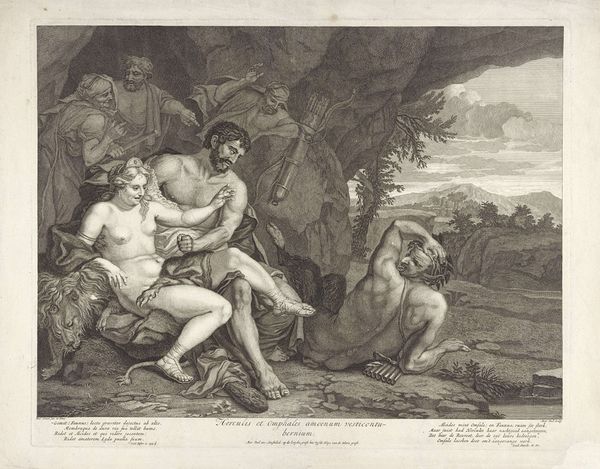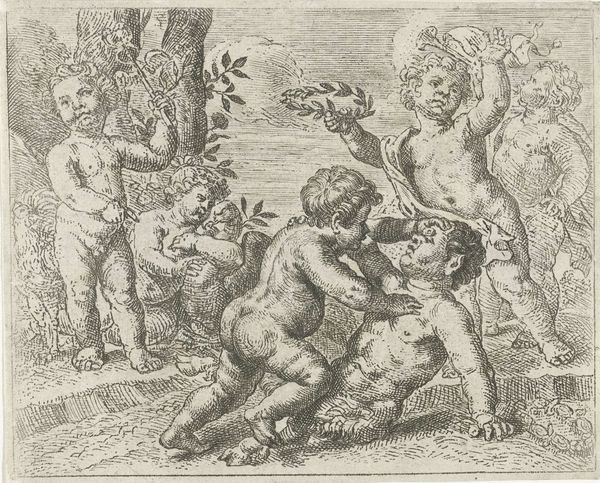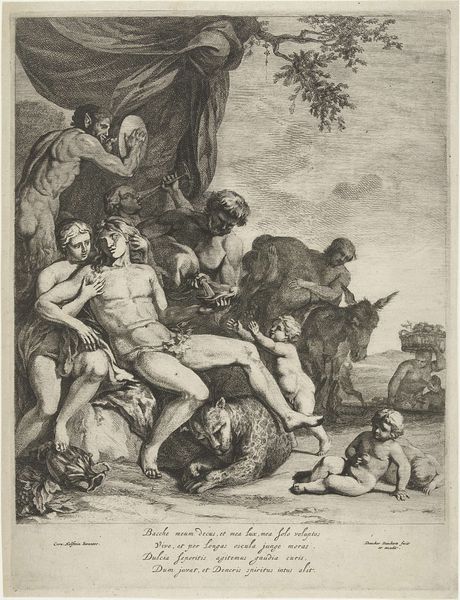
print, etching
#
baroque
# print
#
etching
#
old engraving style
#
landscape
#
figuration
#
history-painting
#
realism
Dimensions: height 119 mm, width 134 mm
Copyright: Rijks Museum: Open Domain
Curator: This etching, titled "Simson en de leeuw," made sometime between 1617 and 1678, depicts Samson's biblical battle. It's currently held at the Rijksmuseum. The artist is Erasmus Quellinus. Editor: There's a raw, physical energy here. It’s all muscle and fur; you can almost feel the lion’s hot breath. Look at how he uses the technique with simple lines to create texture. Curator: The story of Samson has long resonated as a symbol of strength overcoming adversity, but it's also worth exploring the broader social dynamics at play in the representation of power. Consider Samson as an archetype—how does he embody ideas of masculinity and authority, particularly within the historical context of the Dutch Golden Age? Editor: Precisely. And the material itself – etching – played a crucial role in disseminating these narratives to a wider audience. It's a cost-effective method of printmaking. The very accessibility of it would spread this tale of Samson throughout society, influencing the cultural landscape of the time. How interesting to observe the lines creating tension and depth, notice that we are looking to an industry here, how Quellinus is making his version and spreading an older story. Curator: And what about the lion itself? Not merely an adversary, but also a potent symbol of nature and untamed power. Can we also read the lion as a signifier of colonial encounters of this time? Is the animal's otherness a reference to these cultural contacts, particularly with people from other races and countries? Editor: That's interesting, and brings another point. Think of all the processes to fix that in a piece of metal. A big collaboration, a division of work, with artists taking patterns to disseminate popular tales. Each strike of the tool impacts how an audience can get in contact with the materials and production of such work. It all becomes available in those small marks on the work. Curator: Reflecting on this piece, I’m struck by how it captures not just the surface narrative, but also mirrors deeper societal questions about power, gender, and the “other.” Editor: I agree. When one considers the making of the work we uncover not only artistry, but cultural and economic forces at play. The labor connects the image, directly with those making art with lines in the material culture of the 17th century.
Comments
No comments
Be the first to comment and join the conversation on the ultimate creative platform.
